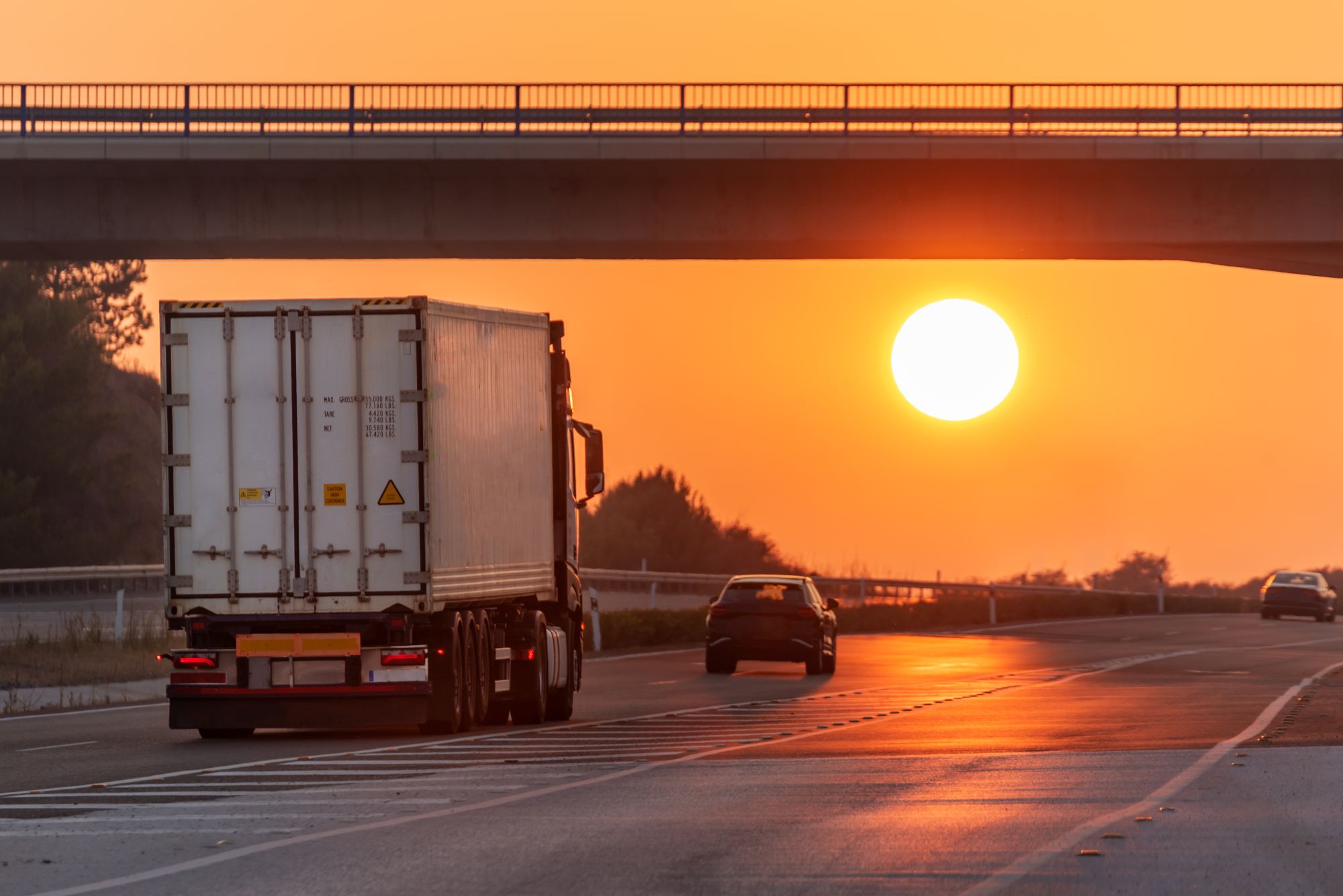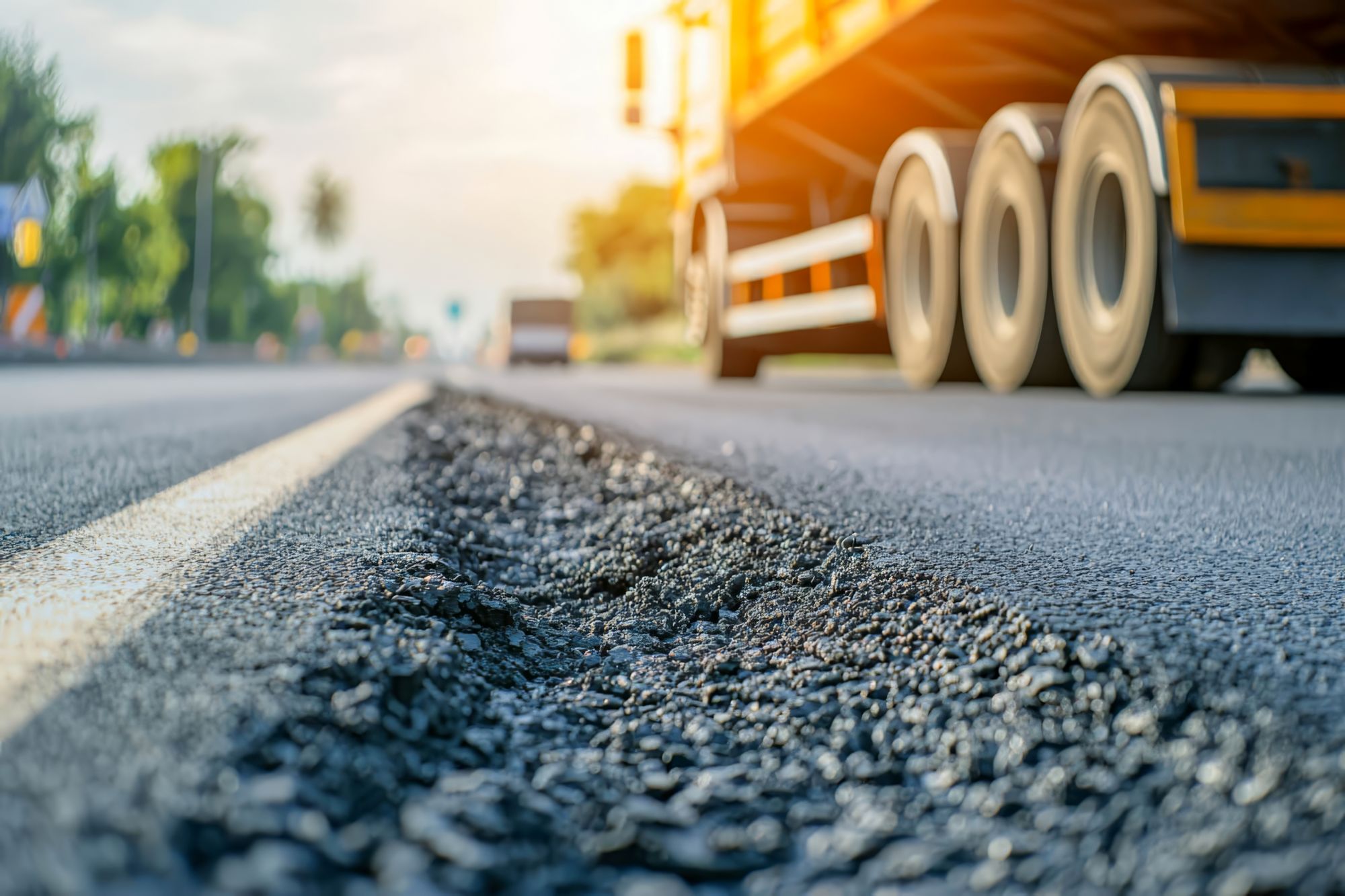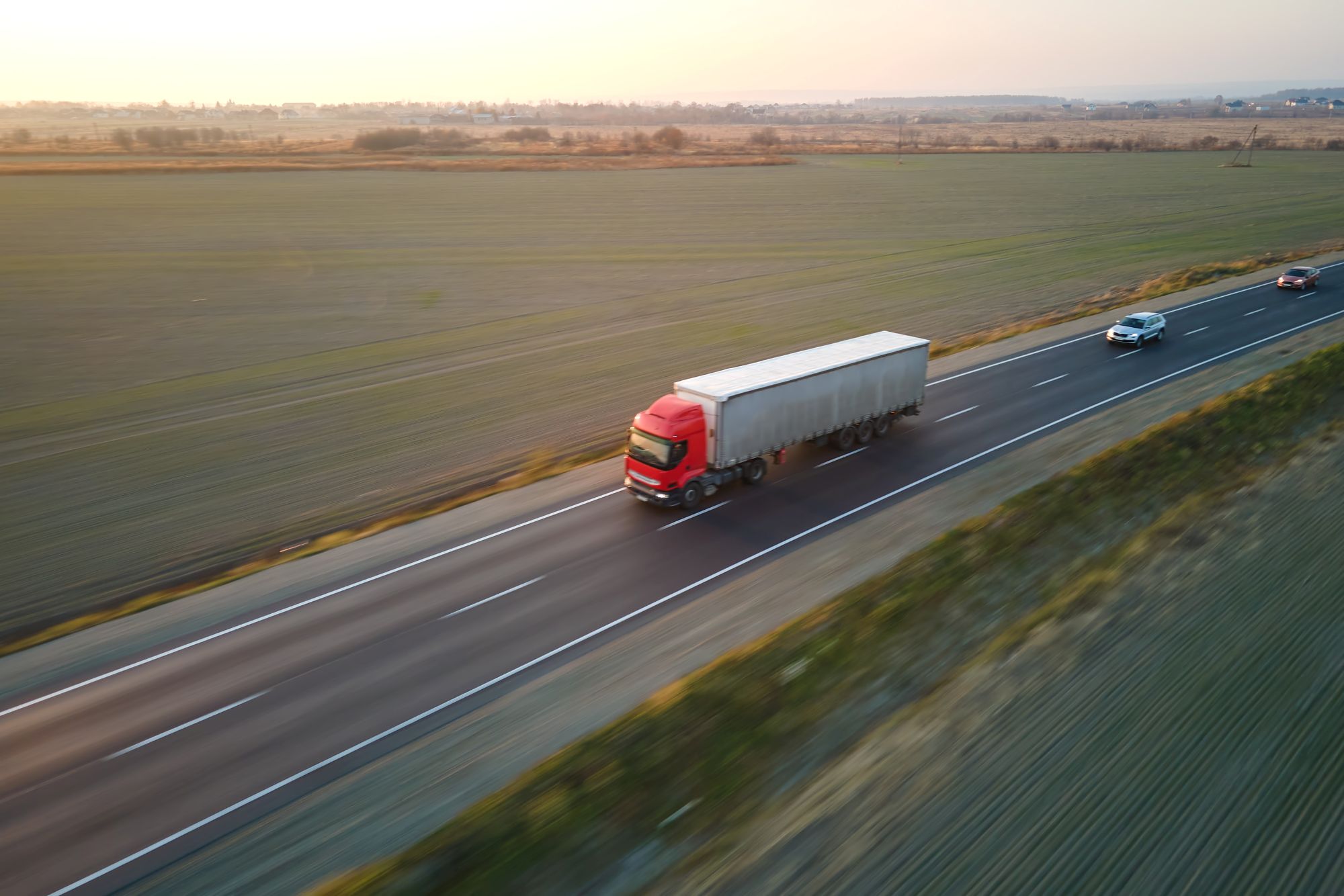
Guest
Como é que a vaga de calor na Europa está a afetar a mobilidade: como se antecipar
Criado: 31/07/2025
•
Atualizado: 31/07/2025
As estradas da Europa estão a assar - e o calor só aumenta. Em todo o continente, o mês de julho de 2025 registou temperaturas recorde, falhas nas infra-estruturas e perturbações nos transportes a uma escala sem precedentes. Para os operadores de frotas e condutores profissionais, o desafio já não é teórico. O calor extremo está aqui e está a remodelar o panorama da mobilidade em tempo real.
Muito se tem escrito sobre os impactos na saúde e os sinais climáticos da vaga de calor deste ano. Mas muito menos atenção tem sido dada à forma como está a afetar a logística, as redes de transporte de mercadorias e as pessoas que mantêm as mercadorias a circular através das fronteiras.
Este artigo explora a forma como as vagas de calor estão a perturbar o sector dos transportes rodoviários na Europa - desde o derretimento do alcatrão e as fissuras nas auto-estradas até aos incêndios florestais, preocupações com a segurança dos condutores e atrasos nas entregas - e oferece conselhos práticos para ajudar as frotas a manterem-se operacionais, resistentes e um passo à frente.
As ondas de calor estão a tornar-se o novo normal
De acordo com a Organização Meteorológica Mundial, a Europa regista regularmente calor extremo, com temperaturas muito acima das normas sazonais. Na primeira semana de julho de 2025, a Alemanha registou máximas superiores a 39°C, enquanto Espanha e Portugal enfrentaram temperaturas superiores a 46°C durante o mês. A Europa, no seu conjunto, está a aquecer aproximadamente [o dobro da média global] (https://www.logisticsbusiness.com/transport-distribution/extreme-heat-puts-supply-chains-under-pressure/).
Estas condições não são apenas incómodas - são operacionalmente perturbadoras. Um estudo citado pela Logistics Business mostra que as ondas de calor são um fator de risco crescente para as operações de transporte de mercadorias, reduzindo o bem-estar dos condutores, danificando a carga e atrasando as entregas.
Consequentemente, as cargas sensíveis à temperatura, como os produtos alimentares, farmacêuticos e electrónicos, estão a tornar-se mais difíceis de transportar em segurança. Os operadores estão a assistir a um aumento das taxas de deterioração e a penalizações por atraso na entrega. A situação é especialmente complexa em áreas onde as redes eléctricas são sobrecarregadas pelo aumento da procura de refrigeração, reduzindo a fiabilidade da cadeia de frio.
Estradas derretidas e auto-estradas rachadas
Um dos sinais mais claros do impacto do calor na mobilidade surgiu no início de julho, quando partes da rede de auto-estradas da Alemanha começaram a rachar sob a pressão da expansão térmica. Secções das auto-estradas A1, A9 e A10, entre outras, foram encerradas para reparações urgentes, uma vez que [as lajes de betão vergaram e as juntas romperam] (https://www.dw.com/en/germanys-autobahns-crumble-in-early-summer-heat/a-44050774) - uma consequência direta da prolongada vaga de calor no país.
Com o aumento da temperatura do solo e a secagem da vegetação, os incêndios florestais estão também a tornar-se uma caraterística regular - e perigosa - dos Verões europeus. De acordo com o resumo da onda de calor europeia de 2025 da Wikipédia, os incêndios florestais deflagraram no sul de Espanha, na Alemanha e na Grécia, provocando evacuações em massa e o encerramento temporário das principais estradas e postos fronteiriços.
Em junho de 2025, a A939 na Escócia foi encerrada devido a incêndios florestais, enquanto os incêndios encerraram várias estradas e túneis rodoviários em redor de Marselha em França. Estes encerramentos não criam apenas caos no trânsito - significam que os veículos pesados de mercadorias têm de se desviar, muitas vezes através de estradas estreitas e inadequadas que podem prolongar os tempos de viagem por horas.
Além disso, o fumo reduz a visibilidade dos condutores e apresenta riscos para a saúde, especialmente para aqueles que passam longas horas na cabina com uma filtragem de ar inadequada. E em muitas zonas, os serviços de emergência estão sobrecarregados, o que implica atrasos na desobstrução das estradas afectadas ou na gestão dos desvios.

Segurança dos condutores
Os riscos para as infra-estruturas são acompanhados de riscos para as pessoas. Os condutores profissionais são particularmente vulneráveis ao stress térmico, à desidratação e à fadiga. O [próprio guia de verão] da SNAP (https://snapacc.com/newsroom/a-truck-drivers-guide-to-summer-in-europe/) para os motoristas descreve os perigos do sobreaquecimento das cabinas, a tensão de longas horas a altas temperaturas e a importância dos sistemas de arrefecimento e do descanso.
Muitas instalações à beira da estrada no sul e leste da Europa continuam mal equipadas para apoiar o bem-estar dos condutores durante as vagas de calor. As paragens de descanso com ar condicionado, o estacionamento com sombra e o acesso fiável à água não estão garantidos - o que torna a [rede de locais verificados e confortáveis] da SNAP (https://snapacc.com/map/) mais importante do que nunca.
"A vaga de calor deste verão é uma chamada de atenção", afirma Raquel Martinez, Diretora de Vendas Europeia da SNAP. "Os sistemas de transporte da Europa foram concebidos para um clima mais frio. Mas não estamos a voltar atrás. As frotas que se adaptarem agora - com as ferramentas certas, as estratégias de descanso certas e a tecnologia certa - serão as que prosperarão."
Começam as proibições de circulação de camiões na Europa
Em resposta ao calor, vários países introduziram ou alargaram as proibições de circulação de camiões provocadas pelo calor. Como [TrafficBan.com relata] (http://trafficban.com), a Bulgária e a Hungria impuseram restrições diurnas aos veículos pesados de mercadorias quando as temperaturas subiram em julho de 2025. As restrições também se aplicaram aos veículos pesados em determinadas estradas vulneráveis durante períodos específicos.
Além disso, as proibições de circulação de camiões relacionadas com feriados nacionais na Alemanha, França, Polónia e Itália estão a agravar o congestionamento do verão. Para mais informações, consultar o site Trafficban.com, que apresenta uma lista das restrições regionais e temporais em todo o continente.
Para os condutores e planeadores, estas proibições criam uma manta de retalhos de zonas de conformidade e limitações de tempo que requerem uma navegação cuidadosa e ferramentas de planeamento actualizadas.
Impacto nos seguros
Com o aumento dos riscos colocados pelo calor extremo, as seguradoras estão a começar a reavaliar a sua exposição. É provável que isso afecte os prémios em todos os sectores. A cobertura de mercadorias em trânsito está sob pressão, especialmente para cargas sensíveis à temperatura, com mais reclamações decorrentes de deterioração e prazos de entrega não cumpridos. Os custos do seguro automóvel também podem aumentar à medida que aumentam os pedidos de indemnização por avarias e acidentes relacionados com o calor.
Entretanto, há um escrutínio crescente em torno da responsabilidade dos empregadores, especialmente se os condutores ou o pessoal sofrerem problemas de saúde relacionados com o calor devido a disposições de bem-estar inadequadas. Em conjunto, estas tendências podem significar prémios mais elevados e negociações de renovação mais difíceis para os operadores sem planos de resiliência claros.
Como se manter à frente das ondas de calor
Na SNAP, acreditamos que a chave para navegar nas ondas de calor da Europa reside na preparação, planeamento e gestão proactiva do bem-estar.
Eis o que os operadores podem fazer:
Planear a temperatura e o terreno: Utilize dados meteorológicos em tempo real para ajudar os condutores a evitar percursos de alto risco.
Equipar os condutores para as condições: Abastecer os veículos com água, equipamento de sombra e kits de arrefecimento de emergência.
Verifique os regulamentos diariamente: Mantenha-se informado sobre as alterações às proibições de circulação de camiões nas fronteiras utilizando fontes verificadas como Trafficban.com.
Otimizar as paragens de descanso: Incentivar os condutores a utilizar aplicações como [intruck] (https://intruckapp.com/) para localizar instalações bem equipadas e com ar condicionado em toda a Europa.
Manter os veículos resistentes ao calor: Prestar especial atenção aos pneus, aos sistemas de arrefecimento e ao desempenho da bateria durante a manutenção - especialmente no caso dos veículos eléctricos ou híbridos.
Rever os planos de seguro e de risco: Assegurar que as apólices têm em conta os atrasos relacionados com o clima, a deterioração da carga e os danos causados por incêndios.
Comece hoje a planear as ondas de calor
Consulte o nosso [mapa SNAP interativo] (https://snapacc.com/map/) ou descarregue a [aplicação intruck] (https://intruckapp.com/) hoje mesmo. Com milhares de parceiros de confiança em toda a Europa, é o seu atalho para paragens mais seguras - independentemente da temperatura.



